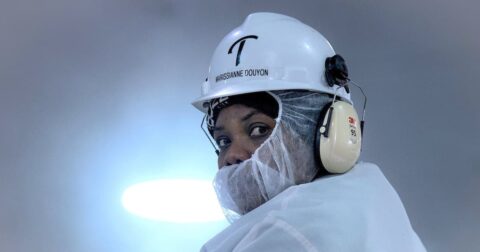Perspective
Critics Declared Veganism Dead in 2025. Here’s What Those Obituaries Are Missing.
Food•5 min read
Analysis
Every year in Italy, nearly 600 million animals are killed and sold as 2.6 million tons of meat. But there's a catch: all of the industry's profits cannot even begin to cover its costs.


Words by Bruno Decc
Every year in Italy, nearly 600 million animals are killed and sold as 2.6 million tons of meat. The average Italian purchases about 76 kilograms (167 pounds) of meat every year, and the industry generates about EUR 30 billion ($36.5 billion) per year from this trade. But there’s a catch: all of this money cannot even begin to cover the environmental and social costs that meat production places on the surrounding community. How can this be and why is it only being revealed now?
On April 20, 2021, Lega Anti Vivisezione (Italian for Anti-Vivisection League or LAV for short), a 44-year old animal protection nonprofit organization, released the first independent scientific study on the environmental and health costs of meat produced and sold in Italy.
Economists have long calculated the cost of damages and weighed and ranked hidden costs imposed by companies (also known as externalities), but now these techniques are being used to take a closer look at the entire meat industry of a single country, Italy. A team of researchers studied the various environmental impacts of meat production such as ozone layer reduction, land acidification, human toxicity, ionizing radiation, land occupation, and water consumption. The result?
According to their calculations, the Italian meat industry costs about EUR 17.5 billion ($21.3 billion) per year for the processing and consumption of Italian beef, pork, and chicken. The annual health cost for Italy in terms of loss of life years and healthy life years due to meat was about EUR 19.1 billion ($23.3 billion). To reach this number, the researchers considered meat’s per capita consumption and its previously known contribution rate for strokes, type 2 diabetes, and colorectal cancer.
This study also confirms that the meat industry in Italy financially impacts communities by heedlessly forcing them to deal with environmental damage to their property or water supply and causing societal health problems that force certain sickly individuals to exit the workforce.
Italy’s meat farming and processing industries generate around EUR 30 billion ($36.5 billion) per year combined. This means, according to this new research, that Italy’s meat industry costs more than it earns.
In late 2020, Italian market strategy consultant SGMARKETING evaluated the country’s added meat farming and processing returns to be EUR 25 billion ($30.4 billion) yearly. Business data platform Statista had a more favorable estimate for 2021: EUR 36.4 billion ($44.3 billion) with a compound annual growth rate of -0.4 percent until 2025. LAV report’s calculation of health and environmental costs of meat to the Italian public ranged between EUR 19.1 to 92.3 billion ($23.3 to $112.4 billion), with an average of EUR 36.6 billion ($44.6 billion). Such numbers place the meat industry in Italy at a deficit, with hidden costs reaching anywhere from 60 to 300 percent over the industry’s total revenue.
Current meat industry regulation in Italy contradicts its own growth strategy and societal objectives. In 2015, Italy, alongside 193 UN member countries, signed the 2030 Agenda for Sustainable Development in which one of the goals hoped for an increase of 7 percent gross domestic product (GDP) growth alongside environmental protection and public health priority. But the meat industry in Italy negatively affects those two priority areas, as shown by the research, and constitutes an economic burden by lowering GDP yearly.
Observing how these repercussions are felt by the average Italian is not hard. Between October 31, 2010, and November 2, 2010, the whole Veneto region of northeastern Italy, was hit by heavy and persistent rainfall that triggered floods and numerous landslides. The Verona, Vicenza, and Padova provinces suffered the most damage, resulting in three fatalities, about 3500 evacuated people, and heavy economic losses for agricultural, livestock, and industrial activities. The Recoaro Terme municipality suffered a detachment of a mass of approximately 225,000 cubic meters, more than three kilometers of run-out distance, placed the population of three villages at high risk, and also damaged infrastructures such as dams, bridges, roads, and houses.
In a 2013 paper, researchers attributed “agricultural husbandry” as one of the key factors in the Veneto landslide, since it manages soil poorly, facilitating erosion there, in coastal and upland areas of southern Italy and plains to the north. The research also pointed out how soil degradation is a particularly significant environmental problem in Italy, where between 2004 and 2010 there were 67 casualties in 14 landslides.
In 2017, Italian researchers used meta-analysis to calculate how many deaths could be avoided simply by lowering meat intake to Mediterranean dietary guidelines. They found a reduction between 2.3 and 4.5 percent for colorectal cancer, and between 2.1 and 4.0 percent for cardiovascular disease–with higher drops among males. Four hundred and fifty-four women with endometrial cancer participated in another study by The Istituto di Ricerche Farmacologiche in Milan, Italy, which found a strong statistical association between their condition and dietary habits, particularly due to a diet rich in red meat and poor in vegetables. Confronting the reality of lives and communities irrevocably changed provides a more relatable picture of the meat industry’s economic issue.
If the meat economy could stop its externalities within one year, the total Italian GDP of EUR 1.7 trillion ($2.1 trillion) would grow approximately 2.1 percent. This margin represents the total cost of meat production to society, a cost Italians are still living with today.
Economic deregulation in Italy and across Europe, trending since the 2000s, hopes that companies would step in to absorb costs like the ones created by the meat industry back into the economy, fixing people’s health, land, air, and ecosystem. However, that constitutes disaster capitalism, which is the acceptance of the negative effects of certain sectors of an economy as part of market regulation. Italy’s old model fails, not only because it goes against the country’s ecological and safety priorities, but because it bogs down an entire sector and is economically self-defeating.
As observed by scholars such as Paul Hawken, deregulated governments have little political interest in weighing in externalities and prefer to pass on the cost to the environment, community, and future generations, since it allows wealth formation in the short run. Regardless of what path Italy takes to cover those hidden costs, phasing out meat production—by switching to a plant-based economy as recommended by the researchers—would increase their GDP by about one-third of what’s hoped for next decade.
Italy’s meat industry is an example of how externalities can have significant costs on individuals and societies. By operating at a deficit, the industry brings with it environmental damage, less health, and less wealth. Results in Italy show that a mere economic measurement can build strong cases for abandoning the meat industry in favor of more profitable and sustainable alternatives.